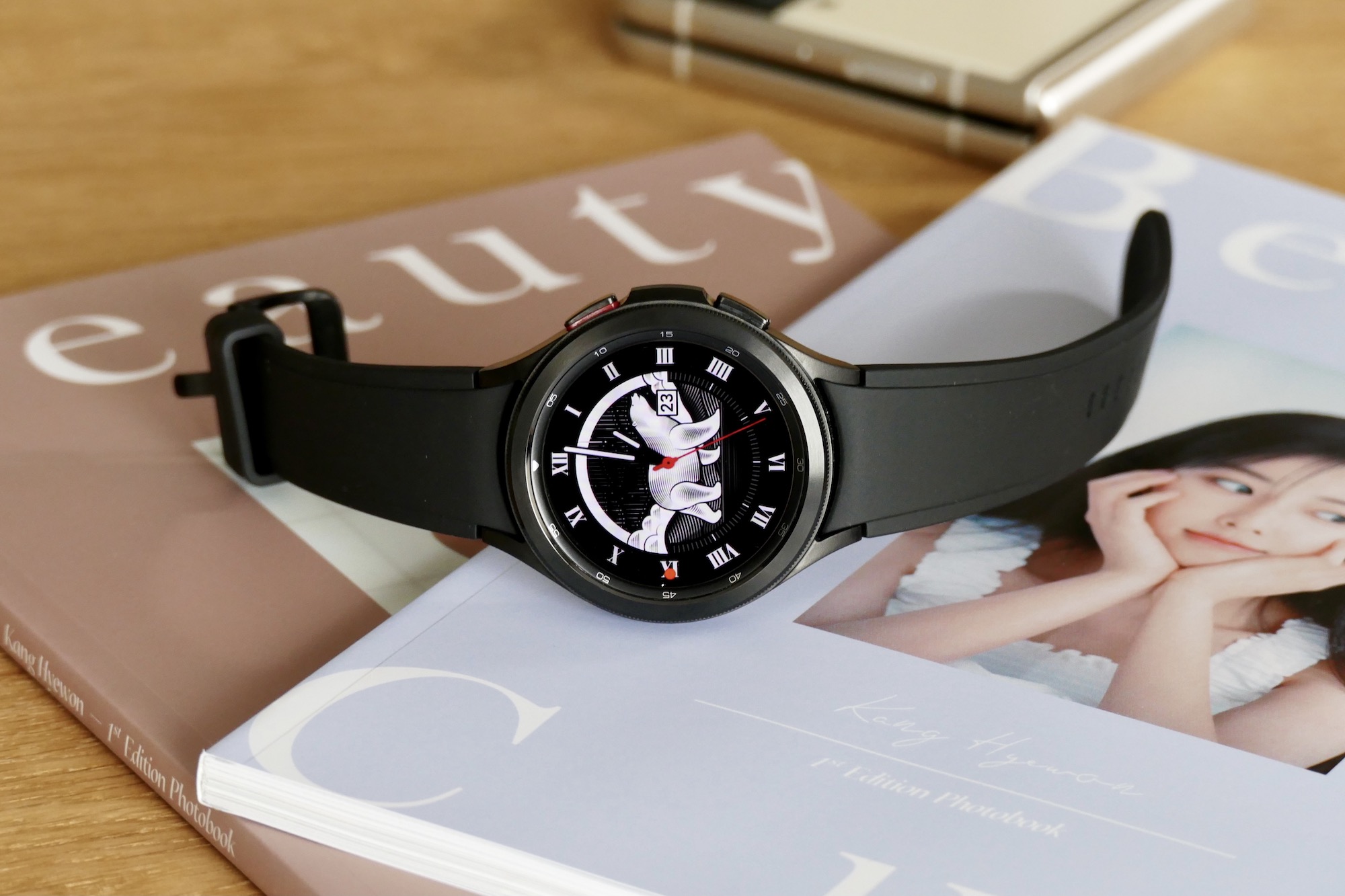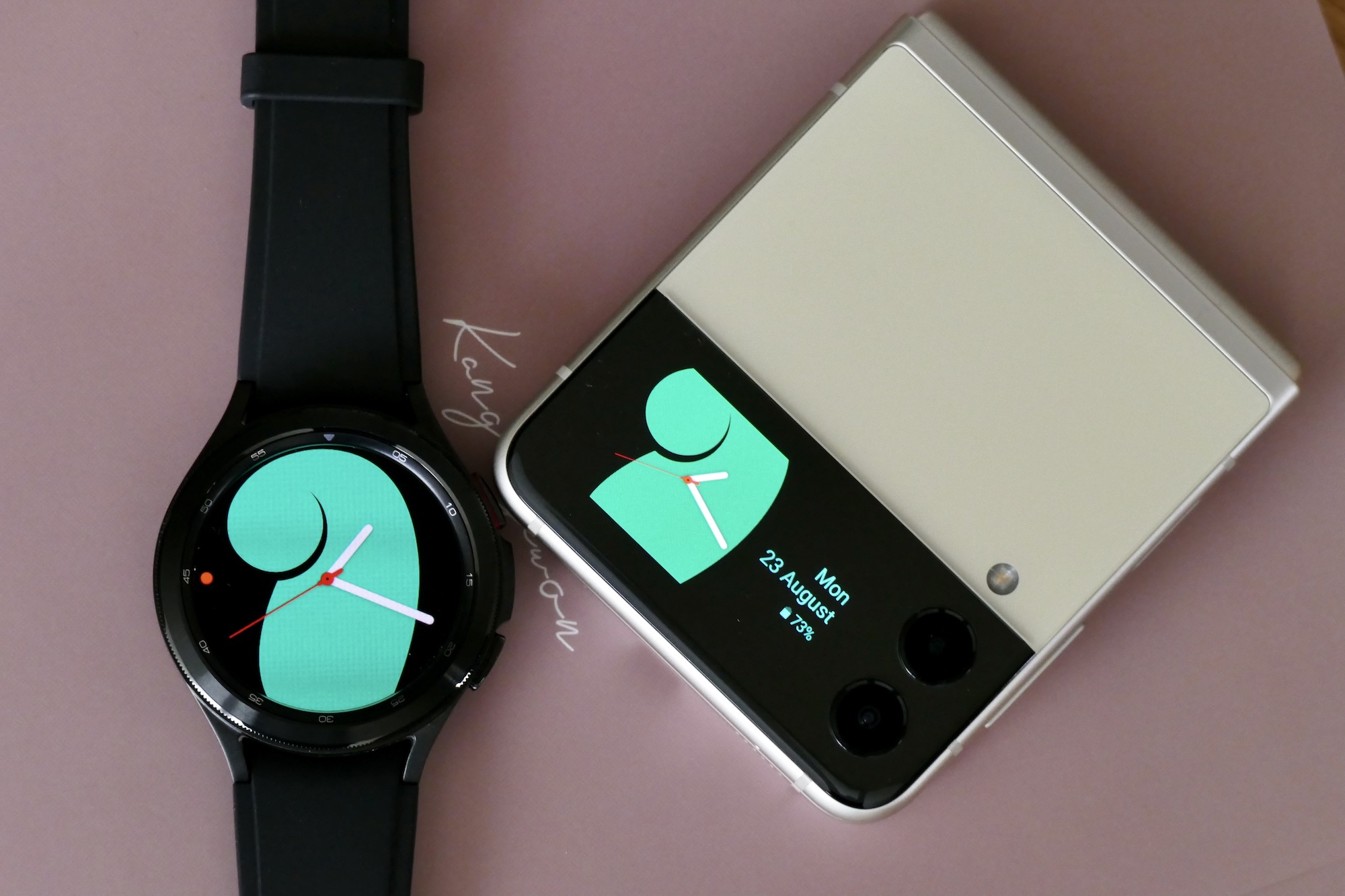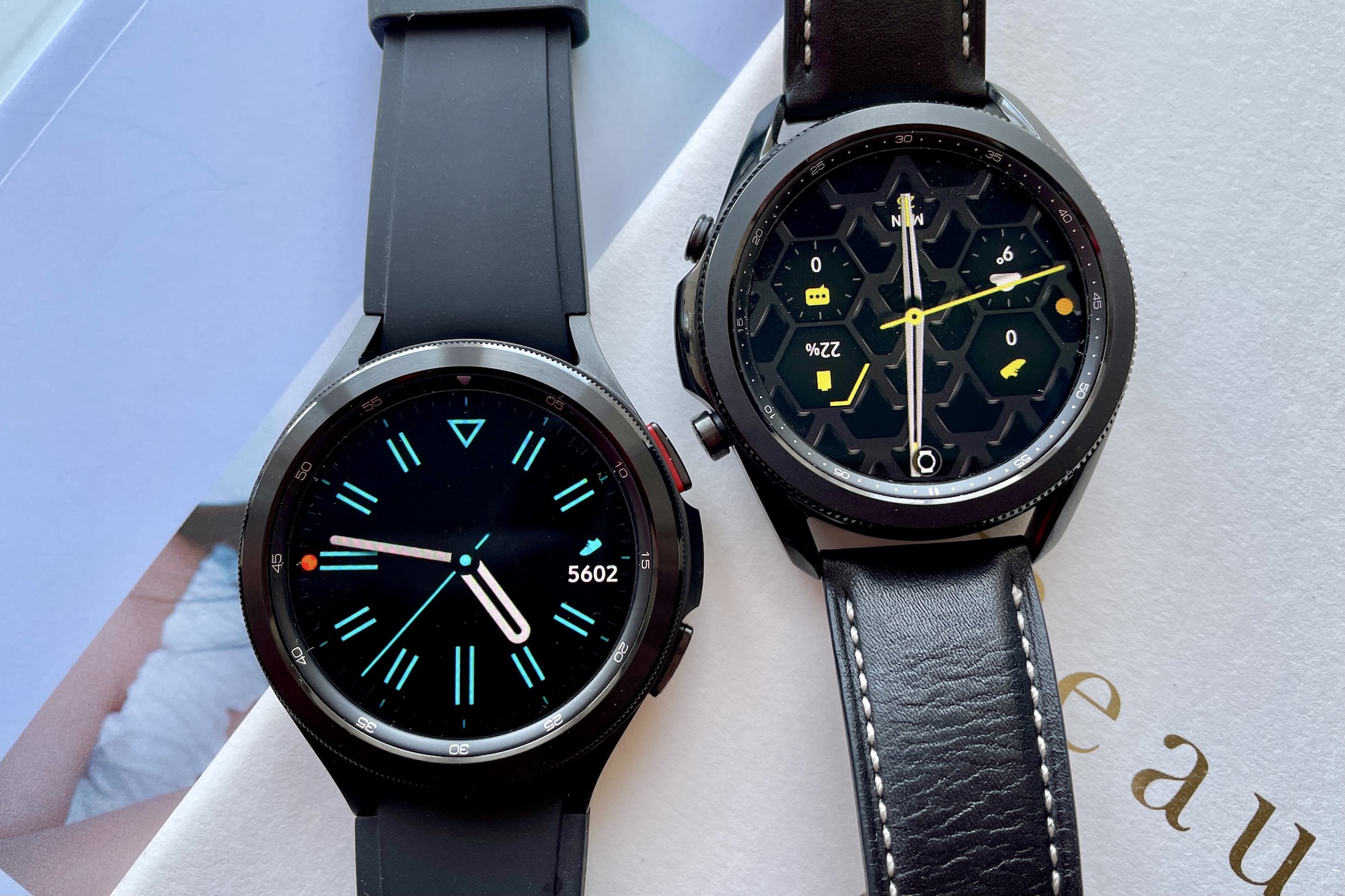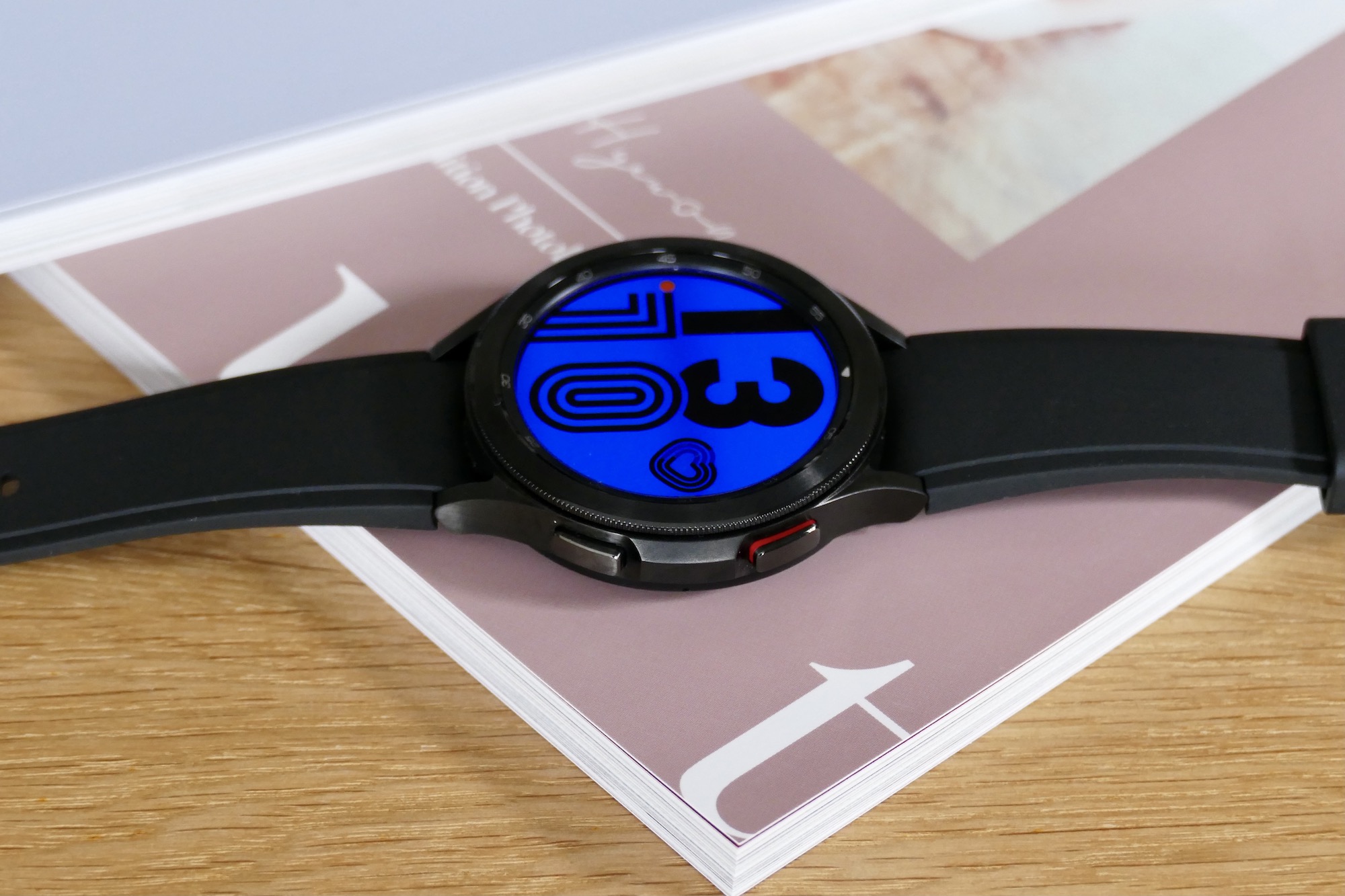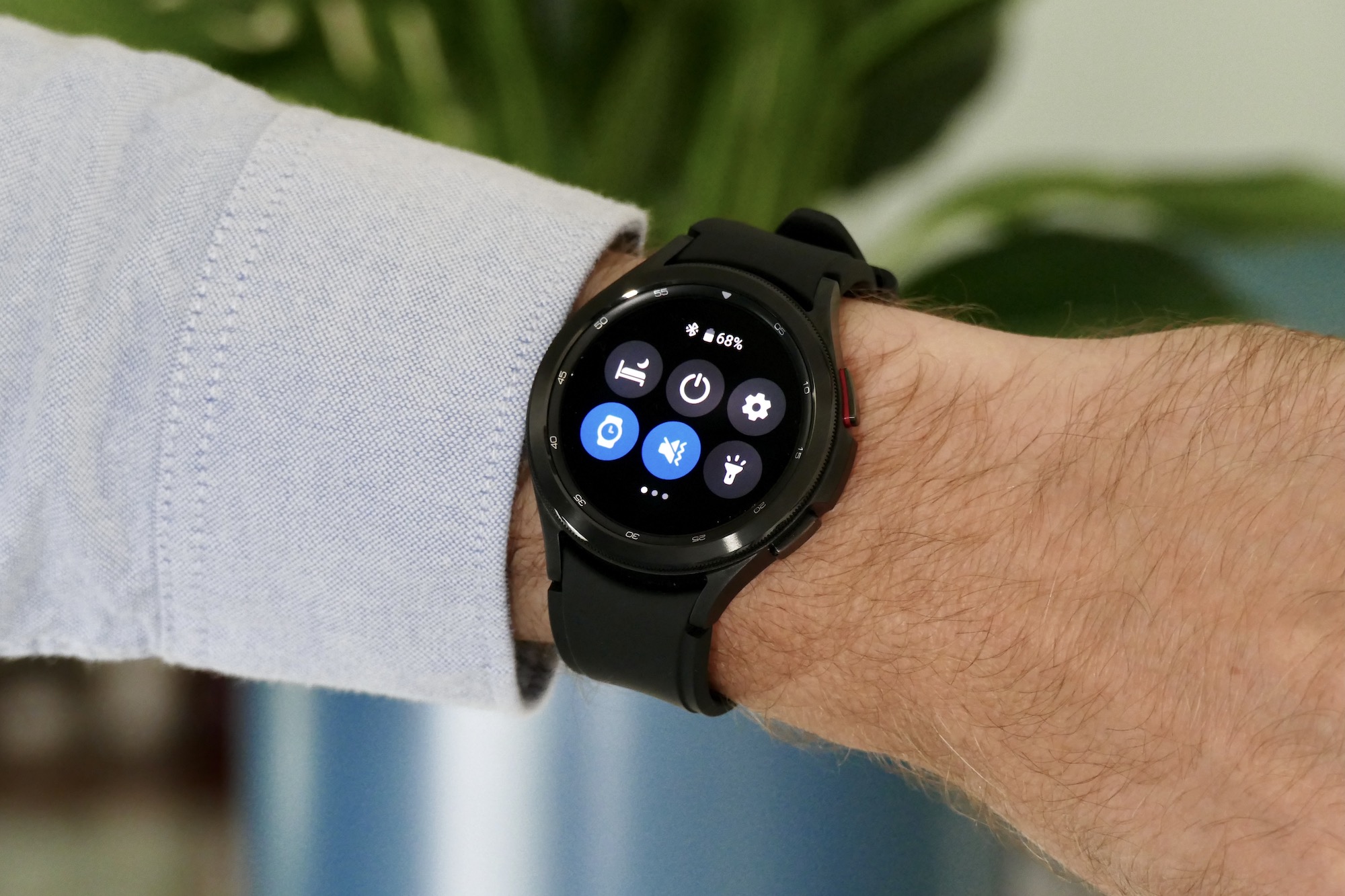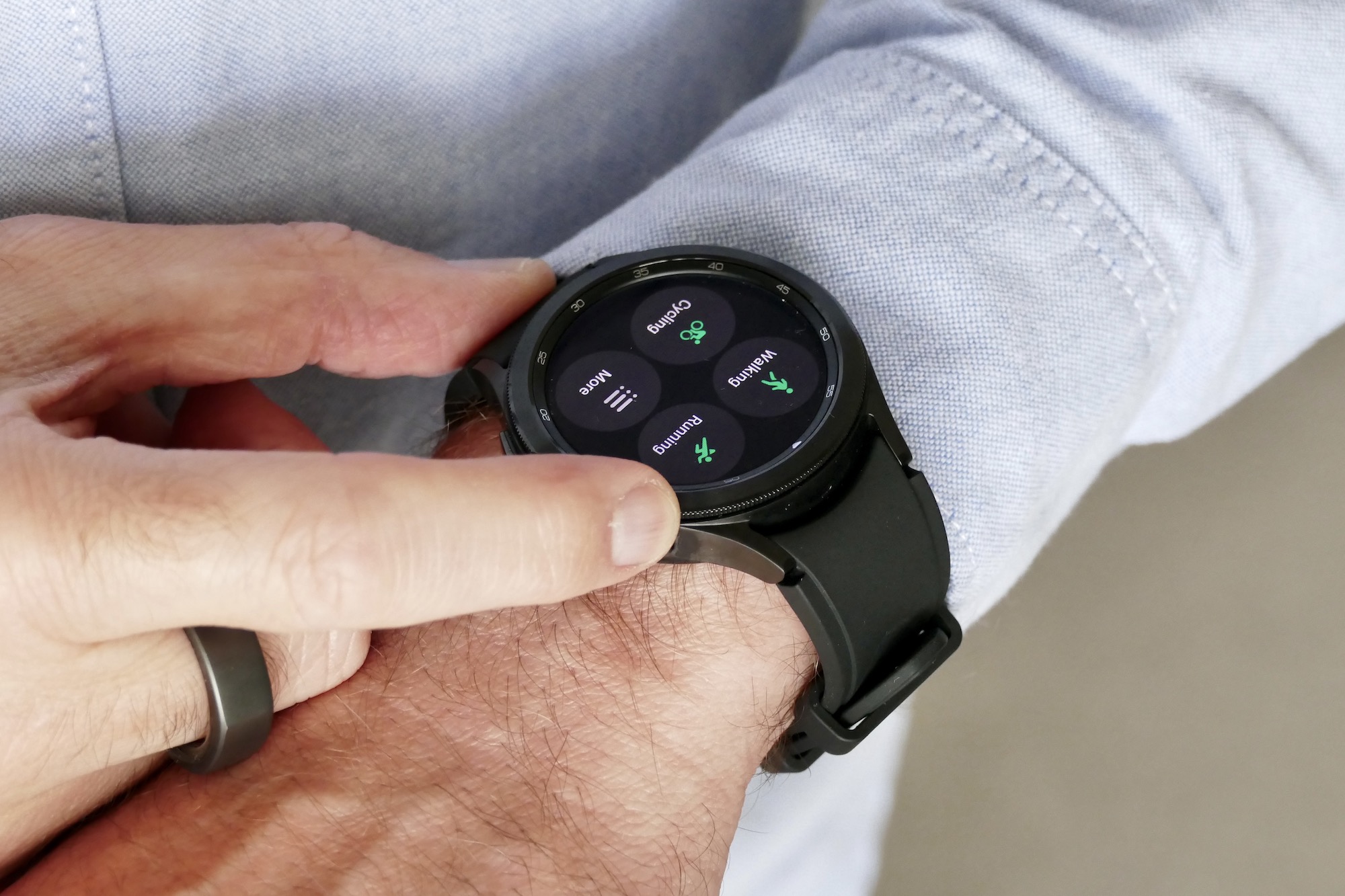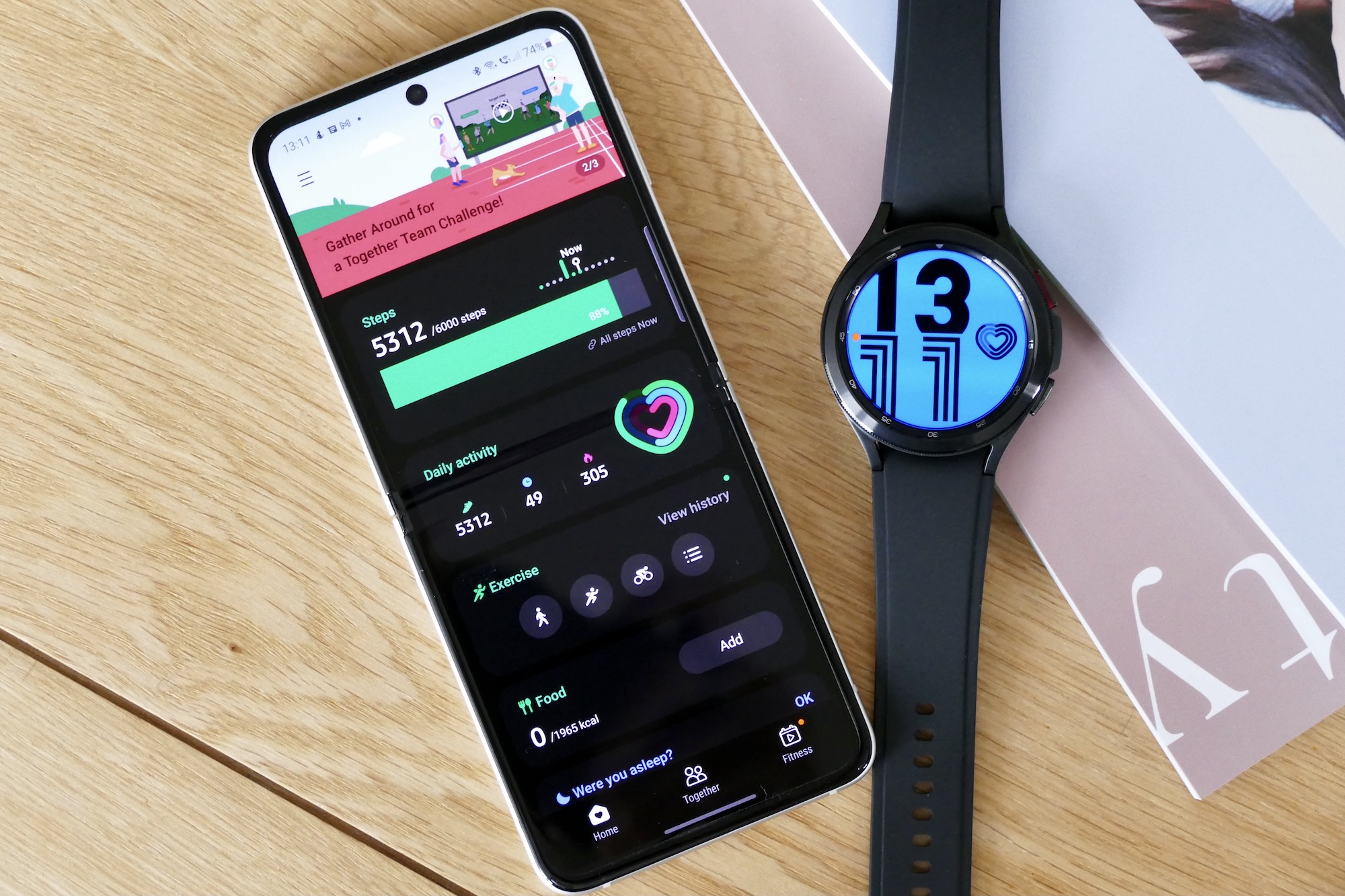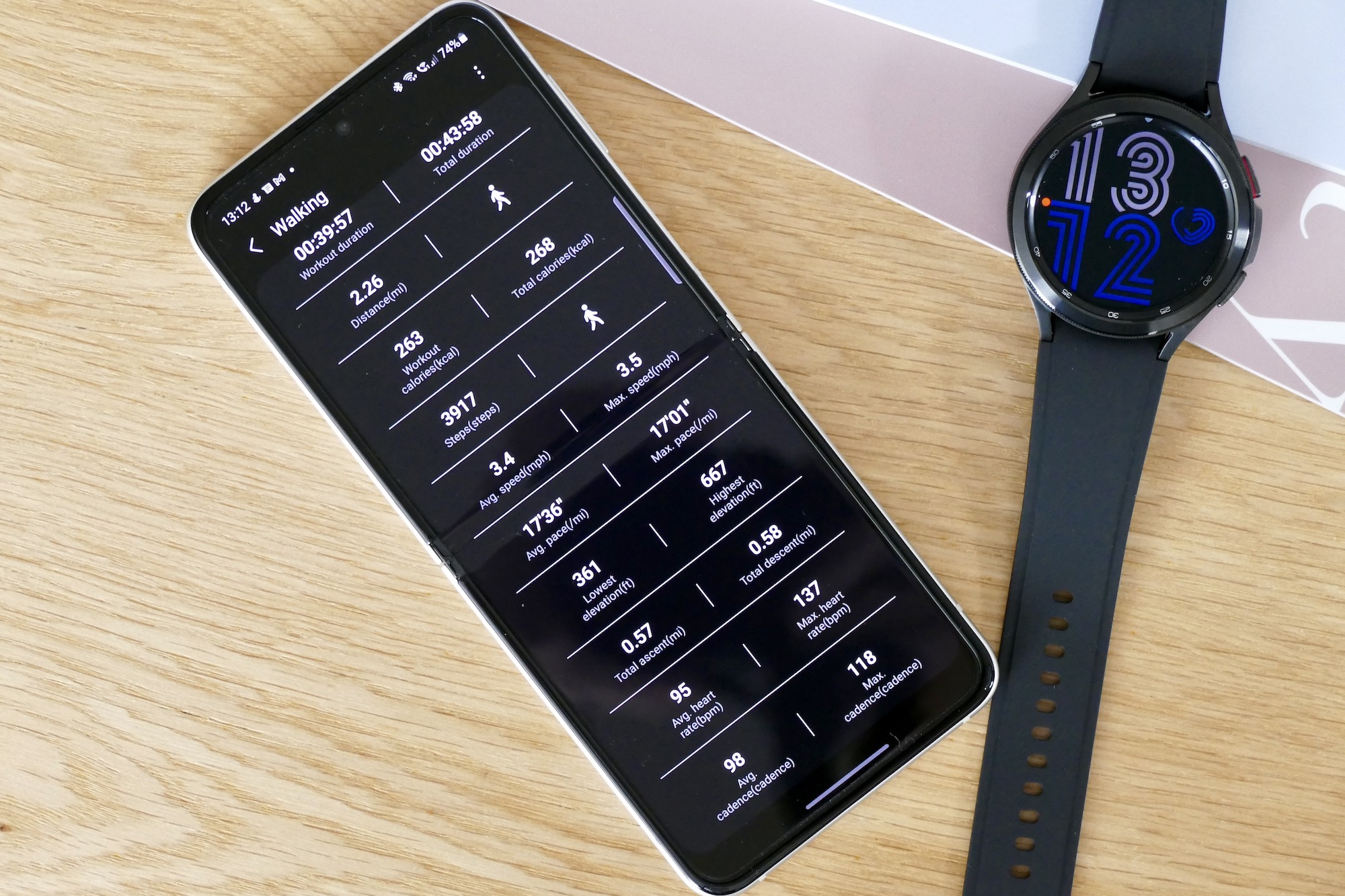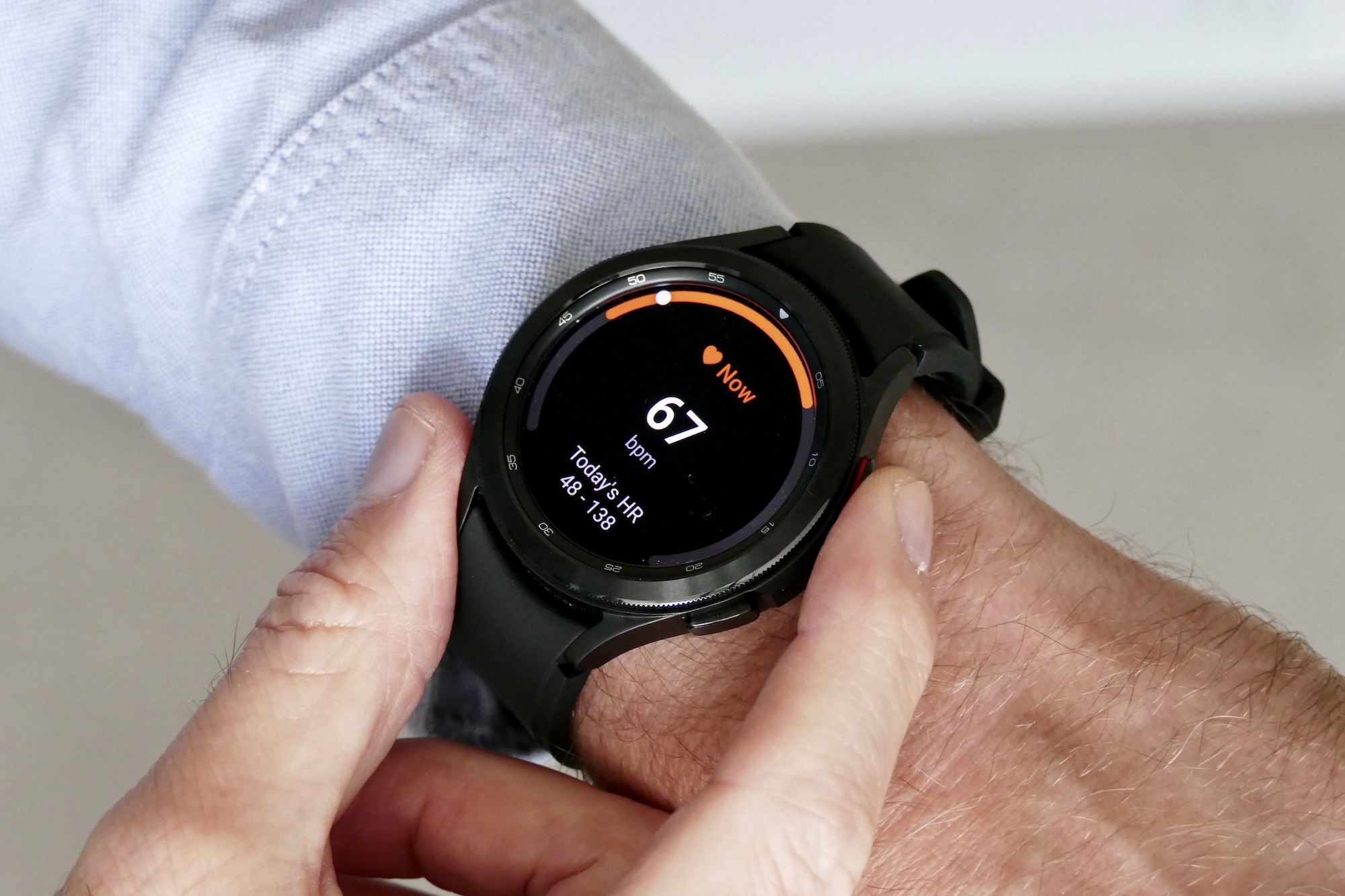“The Galaxy Watch 4 Classic is a seriously capable smartwatch with comprehensive health-tracking features, slick One Watch UI software, and a mature, classy design that feels great on your wrist.”
- Cohesive, mature design
- Rotating bezel is intuitive
- One Watch UI is neat and logical
- Comprehensive health tracking
- Choice of style and size
- Battery doesn't last two full days
- Wear OS 3 software lacks polish
- Too large to wear at night
Does the Samsung Galaxy Watch 4 Classic have what it takes to top our list of the best Android smartwatches? After all, its predecessor, the Galaxy Watch 3, has done so since its release, meaning we have high expectations. Making the Galaxy Watch 4 Classic’s already hard job even tougher is that it also has to introduce us to a new operating system at the same time as wowing us with its hardware.
Just by looking at the Galaxy Watch 4 Classic, it’s obvious Samsung has done its job on the design, but what about the new Wear OS 3 software? There’s a lot to go through here, but don’t worry, this is a feature-packed smartwatch worthy of both your attention and your money.
Design
At first glance, the Galaxy Watch 4 Classic doesn’t look that different from the Galaxy Watch 3, but examine it more closely and there are subtle refinements that give the new model a more cohesive, mature, and watch-like style. The stainless steel case itself comes in either 42mm or 46mm sizes, and I am wearing the 46mm model on my 6.5-inch wrist. It weighs 52 grams without the strap.

The ridges on the bezel are smaller and more tightly packed than on the Galaxy Watch 3, the chronograph markings are more subtle, and the lugs flow more directly from the case itself. It’s this, along with the strap and the buttons, that marks the largest design change. The buttons are oblong, more flush to the case, and therefore are less noticeable, but still separated by a button guard for a clean look.
The strap changes the watch the most, due to the ends matching the curve of the case and flowing lines of the lugs. It works really well, making the strap appear to be an integral part of the watch case, plus the shape stops it from bending too far in either direction, helping it sit better on your wrist. Technically it’s a small design change, but an inspired one that really boosts the watch’s comfort and visual appeal. However, if you change the strap for a non-Samsung version, you’ll lose this benefit.

At 52 grams, the Watch 4 Classic is quite heavy, and you are almost always aware of it on your wrist. This stopped me wearing it overnight for sleep tracking — it was just too noticeable and I found it distracting while trying to fall asleep. The 42mm version isn’t much lighter at 47 grams, and both are significantly heavier than the 37-gram, aluminum-bodied 44mm Apple Watch Series 6.
Despite this, I haven’t found the Galaxy Watch 4 Classic fatiguing to wear during the day, and I really love the balanced, classy, and distinctive design.
Software
The hardware is excellent, but the big change with the Watch 4 is the software. Gone is Samsung’s Tizen from the Galaxy Watch 3, and in comes the joint Google and Samsung platform called Wear OS 3, or simply Wear. Tizen was always the better piece of software compared to old Wear OS, and it made the Galaxy Watch 3 our top Android smartwatch recommendation due to its ease of use, design, and reliability. The concern with the new software for me was, how much of Tizen remains, or has Wear overtaken it completely?

The good news is Tizen’s superior design and usability remains through Samsung’s One Watch UI. Wear OS 3 lets companies use a custom user interface, avoiding all new watches looking basically the same as each other. The Galaxy Watch 4 Classic has a rotating bezel that helps greatly with navigation. You turn it to the left to view notifications and to the right to see Tiles. Swipe up on the touchscreen to find the app menu, and down for quick settings, then use the bezel to scroll left and right through all the options presented. It’s fluid, natural, fast, and surprisingly enjoyable. The rotating bezel has a very precise action with lovely dampening, and a neat “notchy” feel as it turns.
You should spend a few moments digging through the settings to personalize the way your watch works, as raise to wake isn’t activated by default, meaning you have to tap the screen or turn the bezel to wake the display. This is annoying when an app is running and the screen times out. An always-on screen can be switched on, so the watch always shows the time. There are a lot of watch faces to choose from, ranging from the very simple to the very cute, and all have custom ambient modes.

It all feels very similar to Tizen on the Galaxy Watch 3 at first, but Wear uses a clearer font that, when paired with the pin-sharp screen — a 1.4-inch 450 x 450 pixel Super AMOLED on the 46mm, or a 1.2-inch 396 x 396 pixel Super AMOLED on the 42mm — makes everything easy to read. I never need to squint at the screen, and the choice of font is more mature than Tizen’s. The most obvious change happens when you swipe up on the screen and find a list of apps that includes the Google Play Store.
Android apps for Wear OS work on the Galaxy Watch 4 Classic, unlike on the Tizen-powered Galaxy Watch 3, and that includes Google apps missing from old Samsung watches like Google Maps, Google Fit, and Google Pay. Google Pay works normally and you can select either it or Samsung Pay as the default contactless payment system under the NFC setting. Google Fit works alongside Samsung Health, but it’s not immediately obvious how, or if, it can be set as the default.
There are times where Wear OS 3 shows it is still a work in progress, but a small software update arrived during my review that also showed Google and Samsung are working to fix any issues. Initially, Google Maps loaded as usual, but it was hit-or-miss whether you could scroll around the map on the screen, and routes only showed in text form. Both these problems were fixed after the update. However, some apps are still shaky, with Spotify often timing out, leaving me staring at a spinning progress indicator.
Many apps are available through Google Play, including common examples like Spotify and Outlook, but not YouTube Music or Uber. It doesn’t appear Google Assistant is available either as an app to install or as an onboard alternative to Bixby. Notifications are pretty and interactive when they do turn up, but there’s no guarantee of arrival, a problem from the old Wear OS that has sadly carried over into new Wear. However, notifications are grouped together in Tiles, are properly formatted, easy to read, and when you dismiss one on the watch, it disappears on your phone.
On a day-to-day basis, so far, the Galaxy Watch 4 Classic with Wear OS 3 has been excellent, although it is an unusual mashup of Wear OS and Tizen. You get the good looks and the sensible navigation provided by One Watch UI and the rotating bezel, plus the frustration of unreliable notifications and apps that don’t quite work properly all the time from Wear OS, along with plenty of duplicate services. Because Wear will look different on other smartwatches running the software (when they arrive), much of what makes it work well here may come down to Samsung’s One Watch UI, but we won’t know for sure until a challenger arrives in the future.
Health tracking
The health and fitness tracking on the Galaxy Watch 4 Classic is comprehensive, detailed, easy to use, and packed with features. The Samsung BioActive sensor is the standout new hardware addition to the Galaxy Watch 4 Classic. The 3-in-1 sensor incorporates a Bio-Electrical Impedance (BIA) sensor, an Electrocardiogram (ECG), and a PPG heart rate sensor, all powered by new software algorithms.

The BIA enables a body composition measurement showing weight, muscle, fat mass, body fat, Body Mass Index (BMI), body water, and Basal Metabolic Rate (BMR) stats. Data like this has previously only been found on some smart scales, and is helpful in understanding weight loss better, as well as seeing the effect continued training has on your body. It takes 15 seconds to perform and all it needs is your weight and height, but is not suitable for those with pacemakers due to it using a small electrical current to take a measurement.
It’s typical of many high-tech health features on a wearable in that it provides lots of stats, but no real information on what they mean and what you can do to change them. The data itself has a lot of variability and results depend on the time of day, when you last ate, and a whole lot more. It’s hard to establish accuracy this way. It’s likely only helpful if you can compare the results with another device with a body composition measurement, and even then, you will need to do your own research in order to know what to do with the data.

To use the ECG, a separate app has to be installed on your phone, which takes 30 seconds to complete, and it only advises on atrial fibrillation. The app shows an option to measure blood pressure, but this feature is not active on the Galaxy Watch 4 Classic in the U.K.. On the watch, you also get a stress measurement, SpO2 blood oxygen monitor, heart rate, and a women’s health tracker, plus Tiles to manually input daily water and food intake.
The Galaxy Watch 4 Classic is a very strong fitness companion, with all the sensors you need.
Workouts are started quickly with Samsung Health through a Tile, plus you can add Google Fit Tiles to the watch, along with a handy overview of your main stats. I tracked various workouts including those with GPS. The measurements were in line with those I got from an Apple Watch Series 6 linked to an iPhone 12 Pro. The workout mode’s autopause feature is notable for its zealousness, and always paused even when I just stopped to take a photo, then resumed when I restarted.
The Samsung Health app presents its data neatly, and there’s enough information for the casual fitness fan, including all the data gathered from the body composition tests, plus heart rate, stress, sleep tracking, step count, and historical exercise tracking data. I didn’t feel the need to swap from Samsung Health to Google Fit, indicating it provides a similar level of information and usefulness. The Galaxy Watch 4 Classic is a very strong fitness companion, with all the sensors you need (plus some you probably won’t need very often), accurate data collection, and a well-presented app.
Performance, battery life, and charging
The Galaxy Watch 4 Classic uses the new dual-core, 1.18GHz Samsung Exynos W920 processor with 1.5GB RAM. It has not disappointed, with more than enough energy to keep the operating system moving along swiftly. Wi-Fi range is quite short though, and the watch doesn’t always maintain the connection or automatically activate it, such as when you open Google Play. I’ve had to manually connect to Wi-Fi to kickstart some apps, but this may change with another software update. Using Bluetooth headphones is easy and, provided they are already paired with your phone, the Galaxy Watch 4 Classic doesn’t require them to be paired for a second time.

The 46mm Galaxy Watch 4 Classic has a 361mAh battery inside and, so far, after a week of using the watch, it lasts for two working days with a single workout tracked and the always-on screen active, provided you turn it off overnight. It doesn’t have the guts to last two full days when showing the always-on time, and certainly not if you also use sleep tracking and track a workout.
There is a power-saving mode that activates when the watch reaches about 10% battery remaining. It adds another couple of hours of use by turning off nonessential features like the always-on screen. Charging is performed using a supplied magnetic charging disc, and it takes about 80 minutes to go from 10% to full. The display helpfully shows an estimation of how long a full charge will take.
Price and availability
The Galaxy Watch 4 Classic starts at $349, in black or silver, and will be released on August 27. The 42mm model is the cheapest, while the 46mm is $379. Add 4G LTE and the price climbs to $399 for the 42mm or $429 for the 46mm version. Buy through Samsung’s online store and you can customize the watch with different straps.
Our take
The Galaxy Watch 3 is a tough act to follow, and any new operating system is always going to be hard to implement perfectly the first time, but Samsung has successfully navigated around any issues and delivered a superb follow-up to what was the best smartwatch for Android phones from the last year. The Galaxy Watch 4 Classic expertly mixes a smart design with extensive health-tracking ability, and offers it in not only two different styles, but various sizes as well. It is absolutely worth your money.
Samsung’s use of One Watch UI is key to the Galaxy Watch 4 Classic’s usability, as the interface is slick, logical, and fast. It’s fun to use due to the rotating bezel, and the smartwatch’s comfort and toughness mean you can wear it all day long without a problem. I did find it too large to wear overnight, and would like the battery to provide two full days of use, but these are not issues exclusive to the Galaxy Watch 4 Classic.
Wear OS 3 shows plenty of promise, but it’s disappointing to still see the old problems of not all notifications arriving and not all apps being available or always working properly on the watch. It’s better than before due to One Watch UI, but still not as reliable or as app-packed as Apple’s WatchOS. However, due to its newness, it shouldn’t be judged too harshly just yet. Where does this leave the Galaxy Watch 4 Classic? Samsung has definitely made a superb successor to the Watch 3.
Is there a better alternative?
If you own an iPhone, the Apple Watch Series 6 or Apple Watch SE are still the smartwatches to buy. They integrate perfectly with your phone, while others miss out on certain features, and WatchOS is fast and logically laid out. Apple Health is great, and the battery will last you a couple of days.
If you have an Android phone, the Galaxy Watch 4 and Galaxy Watch 4 Classic are the only two with the latest Wear OS 3 software, and that may end up being crucial for speedy updates over the next year. Mobvoi’s TicWatch Pro 3 and TicWatch E3 are scheduled to get Wear OS 3 this time next year, and although both are still good choices today, Samsung’s watches are a better bet as you get the new software without an extensive wait.
It’s Samsung that offers the Watch 4 Classic’s biggest challenger. The Galaxy Watch 4 has all the same features and performance as the Watch 4 Classic, with a different design and a touch-sensitive bezel. It’s cheaper as well, and your preference will likely come down to which design you like better.
How long will it last?
The Galaxy Watch 4 Classic’s case is water-resistant to 5ATM and has an IP68 rating, plus it meets the MIL-STD-810G toughness standards. The strap on my review model is made of thick rubber, and feels very hard-wearing. The Wear OS 3 software is right up to date now, and will likely continue to be ahead of the competition for some time, due to no other smartwatches with the software being available yet. There’s a 4G LTE option for anyone wanting to add cellular connectivity using an eSIM. The Galaxy Watch 4 Classic will last for two years at the minimum.
Should you buy it?
Yes. The Galaxy Watch 4 Classic’s design and on-wrist comfort is top-notch, there are tons of health-tracking features, and performance is excellent. It’s a great smartwatch to buy.


